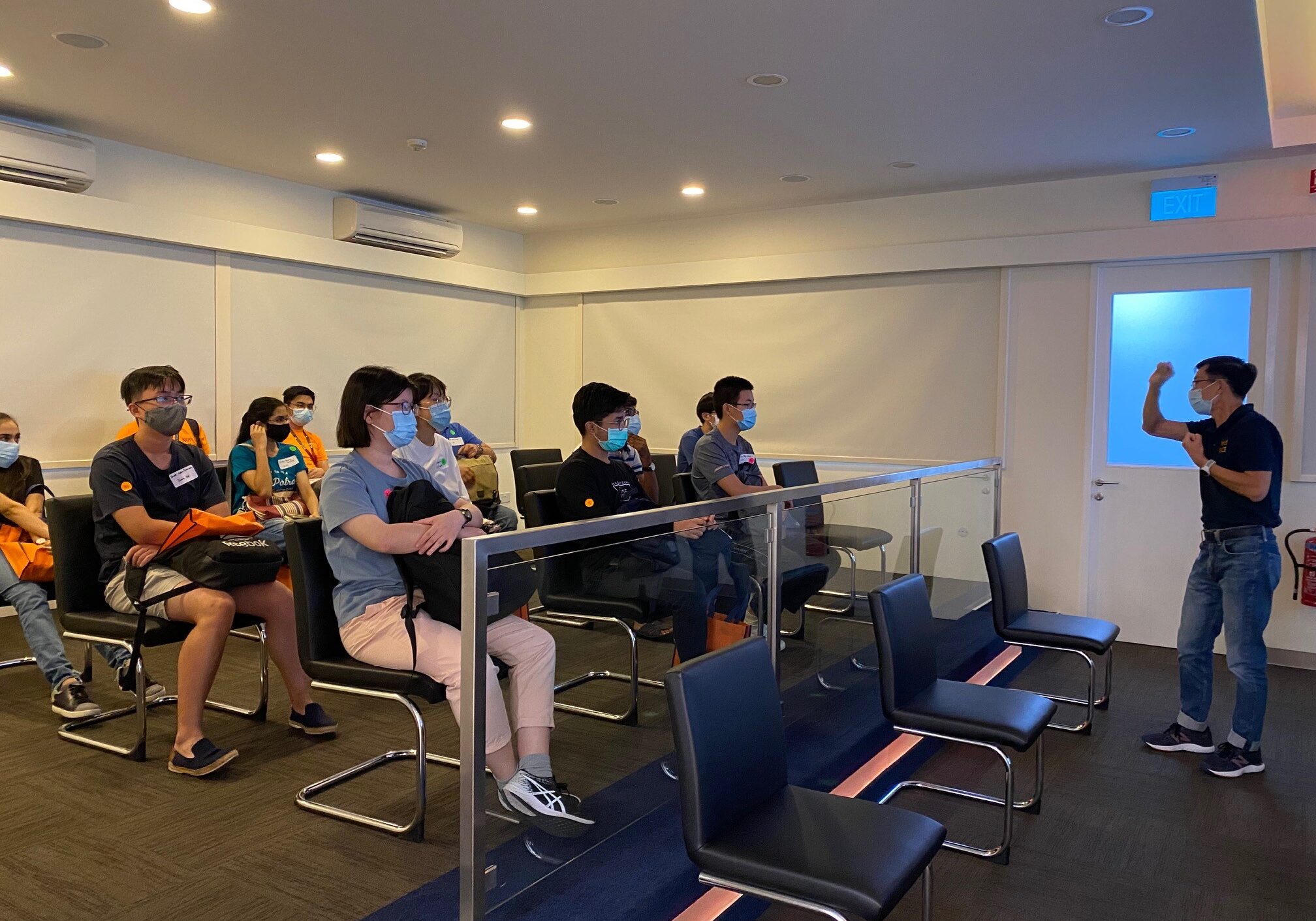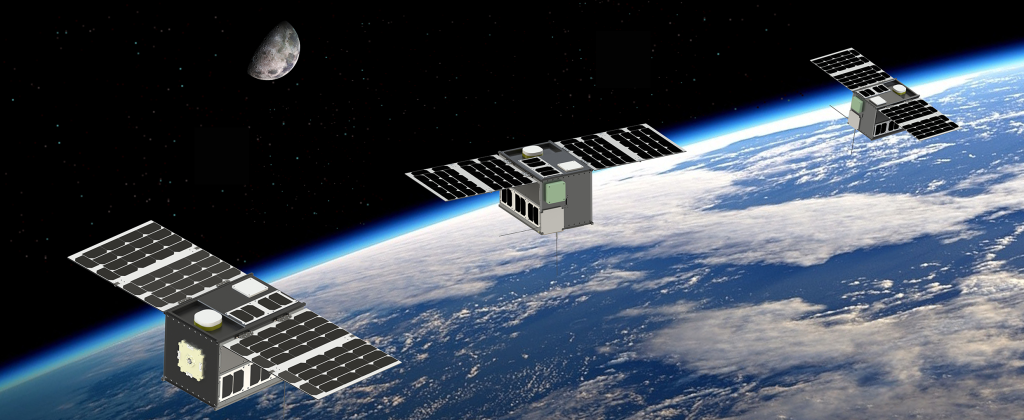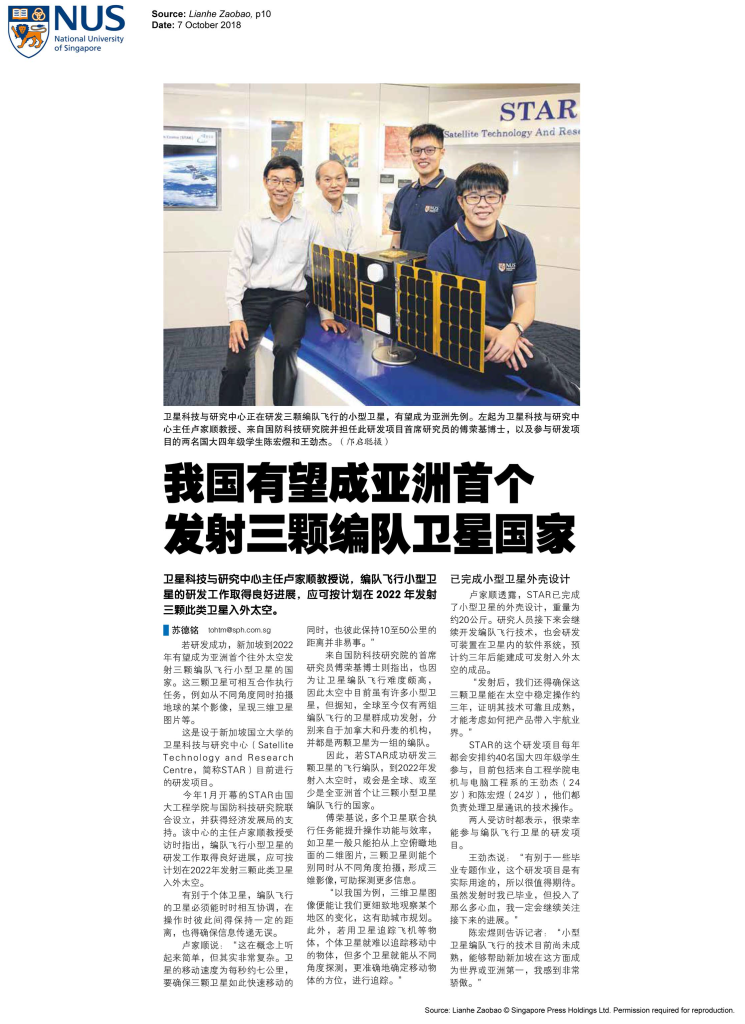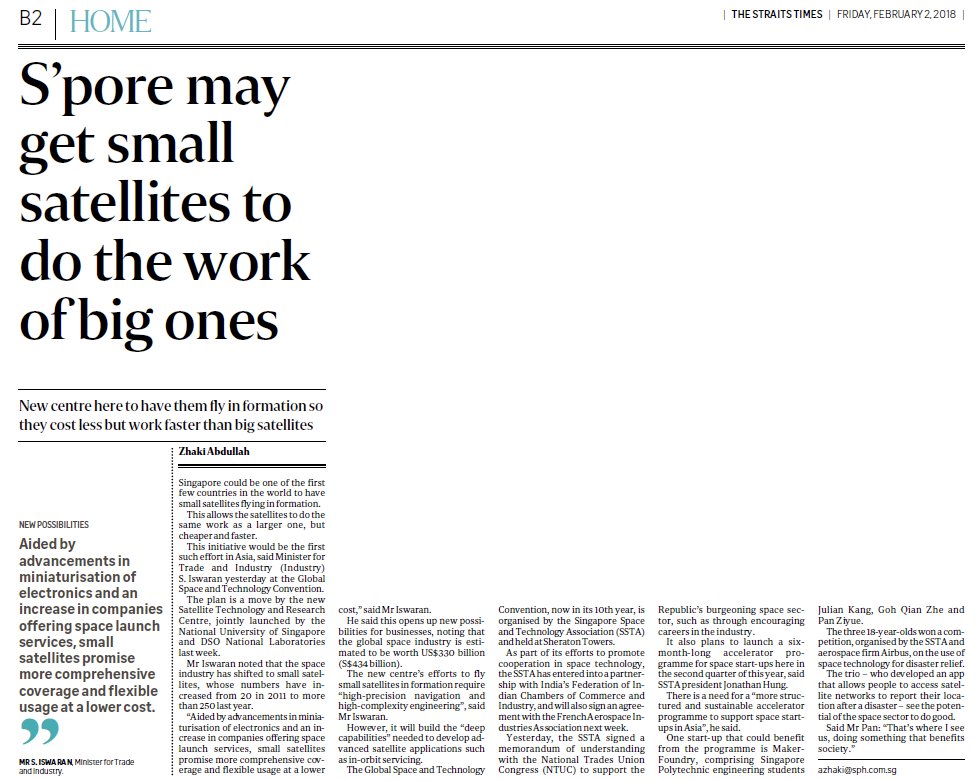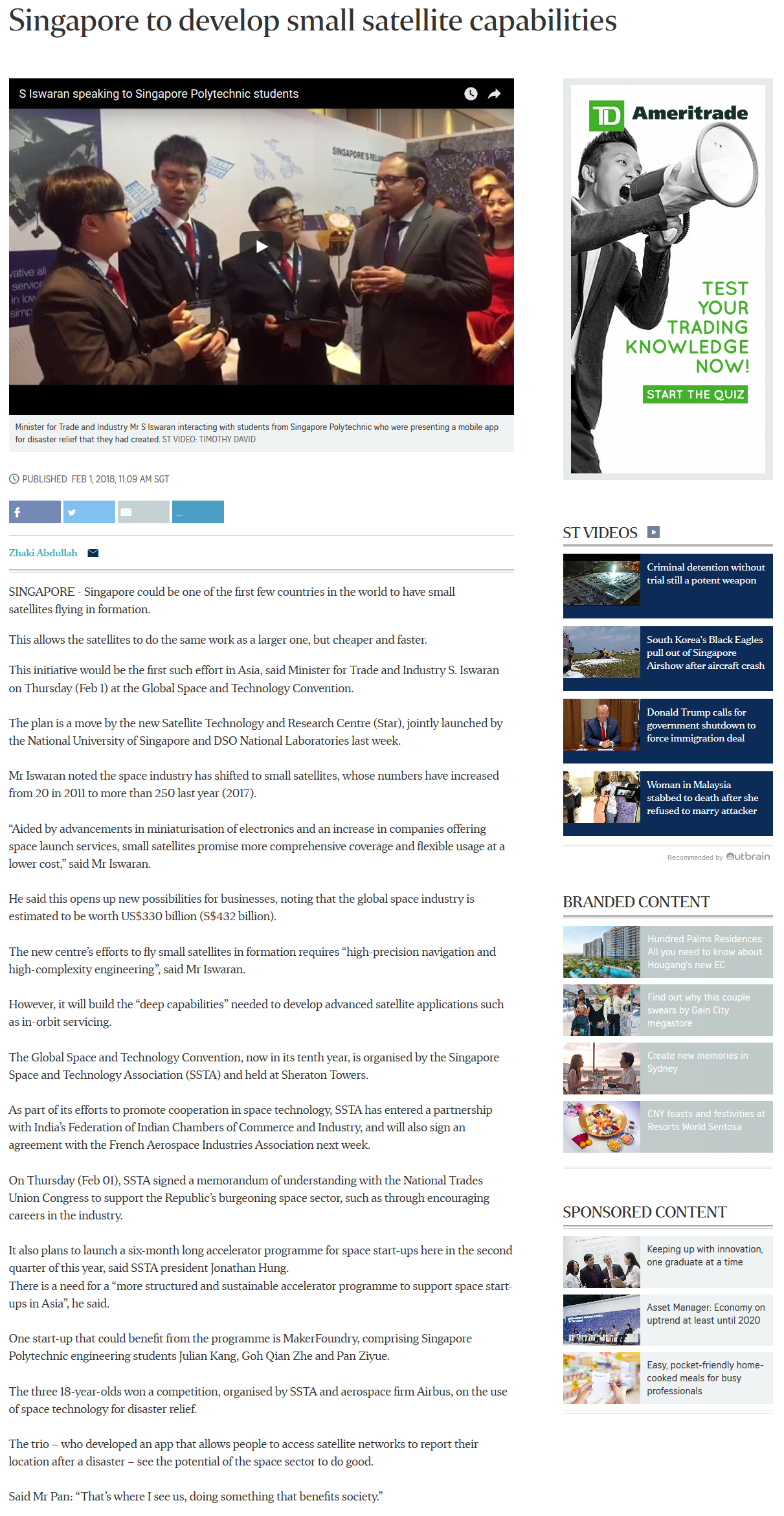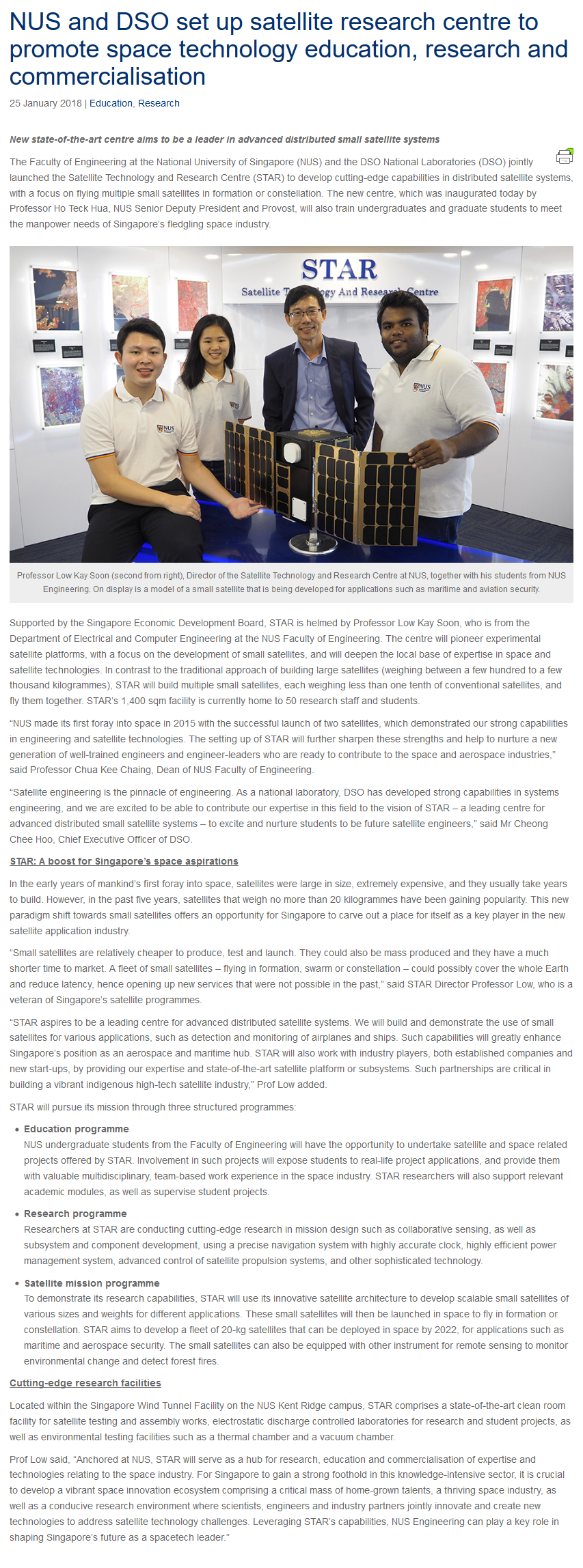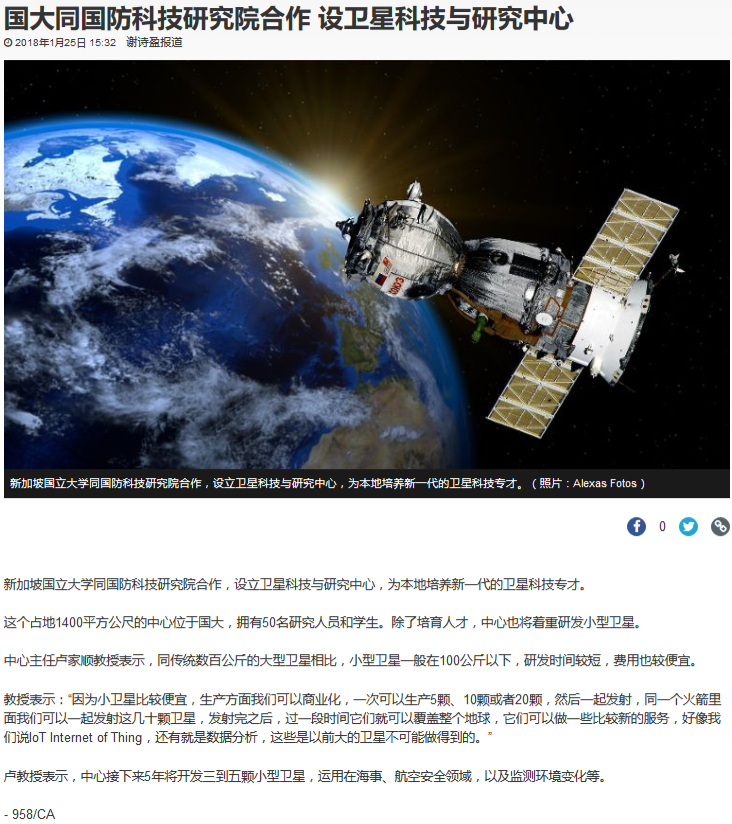Satellite Technology And Research Centre
Satellite Technology And Research Centre
 STAR focuses on building miniaturized satellites that could fly in multiples for formation and constellation flying. It is envision that this will open out new potential applications such as collaborative sensing for the environment, more timely and scalable communication services. Satellite mission of these applications will in general require advanced technology such as active propulsion control of the satellites, highly precise inter-satellite navigation, advanced attitude control etc.
STAR focuses on building miniaturized satellites that could fly in multiples for formation and constellation flying. It is envision that this will open out new potential applications such as collaborative sensing for the environment, more timely and scalable communication services. Satellite mission of these applications will in general require advanced technology such as active propulsion control of the satellites, highly precise inter-satellite navigation, advanced attitude control etc.
Presently, STAR is building concurrently 5 satellites. The flagship programme is a formation flying of 3 satellites named Lumelite-1, -2 and -3. These 3 satellites will be flying with a separation distance between 50 and 200km. These satellites have inter-satellite communication capability, precise clock synchronization, and accurate relative ranging technology. Lumelite-4 is another programme demonstrating VDES application for maritime safety and communication. Lumelite-1 to -4 are 12u CubeSat size (approximately 20x20x30cm). Lumelite-5 is a larger 50kg satellite with a dimension approximately 50x50x50cm. It is designed to demonstrate high data rate communication between a low earth orbit satellite and a medium earth orbit satellite.
The Centre has an undergraduate programme track on CubeSat programmes with a focus on student-centric satellite development. This programme provides an opportunity for NUS Engineering and Science (physics) undergraduate students to take up some course works and participate on a team based multi-disciplinary programme with realistic engineering challenges. The students will participate in project work in the Centre with mentorship from the research staff. The student team is presently building 2 sets of 3u CubeSat named Galassia-2 and Galassia-3.
STAR is located at the National Wind Tunnel building. The Centre has ESD (electrostatic discharge) control laboratories, a class 100k cleanroom, a satellite mission control room, space environmental test setup such as thermal chamber, thermal vacuum chamber etc.
Vision, Mission and Values
Vision
- To be a world-class centre for advanced distributed satellite systems using multiple satellites flying in formation, constellation or swarm.
Mission
- Support the advancement of Singapore space industry as a centre of excellence by providing the industry with state of the art satellite technology
- Training of undergraduate and postgraduate students to support the manpower needs to meet Singapore’s ambition to build a new spacecraft industry
- Conduct research in mission design, subsystem and component development and qualify them in space with experimental satellite platforms to meet the scientific and engineering challenges for future innovative satellite programmes and applications
Value
- Teamwork
- Passion to explore
- Commitment to deliver
- Ensuring Quality
Principal Investigators:
Research Areas:
Formation Flying Satellites
NUS-DSO STAR flagship mission involves the design and development of 3 small satellites which would orbit around the earth in tandem.
- Success of the programme will indigenously build up Singapore’s capability for the first time with multiple satellites flying in tight formation and will pave the way for future advanced applications such as collaborative sensing and in orbit servicing.
- The formation flying mission requires precise control and navigation of satellites in orbit.
- The programme would reinforce Singapore’s position as an innovation hub for small satellites.
- Undergraduates and young professionals will have the opportunity to participate in the integration of satellite and mission control from this programme, equipping them with career capital to take on jobs in the global space industry.
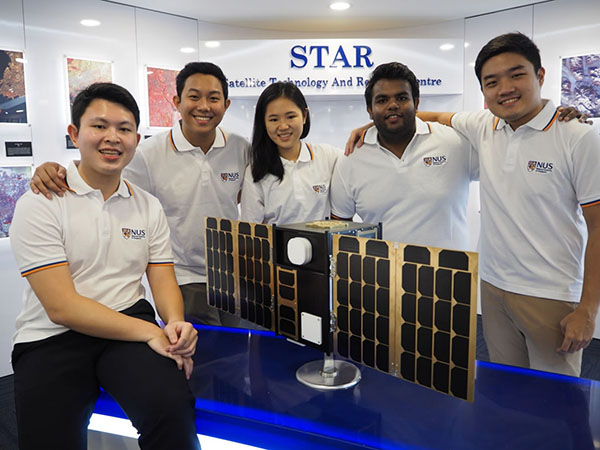
Satellite team with structural model of satellite
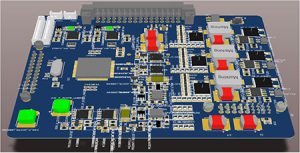
Power system of satellite
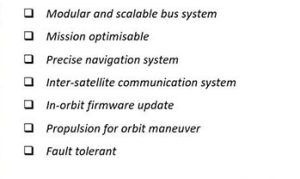
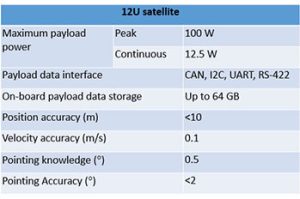
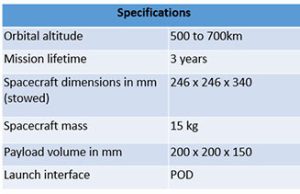
Advanced Inter-Satellite Communication Payload on Small Satellite
To develop a cost-effective RF-based advanced inter-satellite communication payload on a small satellite and to achieve high data rate link to LEO satellite anytime and anywhere.
This project is multi-disciplinary and involves multiple IHLs comprising of A*STAR-I2R, NUS and NUS-STAR, with early industry involvements from Addvalue Technologies.
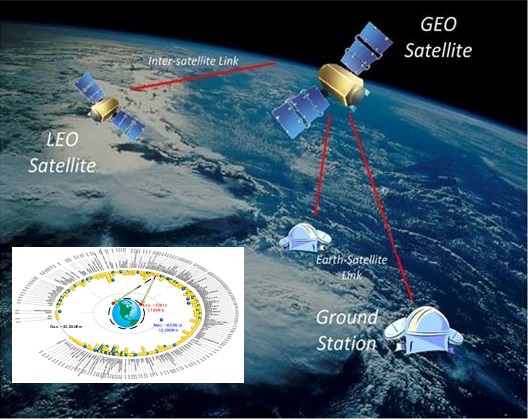
- Increase in the number of Low Earth Orbiting (LEO) imaging satellites launched placing strong demand for effective data download solutions.
- LEO-GEO/MEO inter-satellite communication enables real-time data download anywhere, anytime, thus unlocking new opportunities for Space.
- Industry’s needs:
1) High data rate inter-satellite communication link subject to size, weight and power (SWaP) constraints of small satellite;
2) High accuracy in beam pointing / directivity;
3) Wide scan angle;
4) Support of spotbeam mobility management.

Preliminary satellite design with payload electronics within
TECHNOLOGY FEATURES
- Hybrid beamforming using A*STAR’s patented beam steering architecture to enable high resolution beam steering (1°) to meet accurate beam pointing and discrimination requirements.
- Innovative antenna design using A*STAR’s patented meta-surface wideband antenna to offer wide-scan angle (±90°) coverage for higher data rate (> 50 Mbps) inter-satellite communications.
- Spot beam and mobility management collaborating with Addvalue.
- Indigenous 27U small satellite design (50~75kg) using NUS’s patented modular and scalable bus system with in-orbit firmware update and fault tolerant features. Assembly, Integration and Testing (AIT) of the small satellite with the payload will be performed at NUS STAR’s facility.
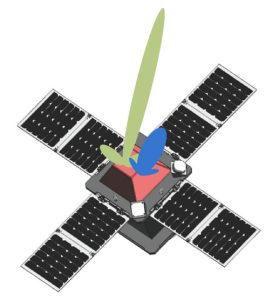
Ka-band deployable antenna array
NEW APPLICATIONS
- The cost-effective inter-satellite communication enables earth station to achieve real-time data link to LEO satellite, anytime and anywhere, unlocking new opportunities for Space.
High Performance VDES Payload on Small Satellite
To develop a high performance VHF Data Exchange System (VDES) payload on small satellite that will significantly improve signals de-collision and two-way data communication from space to achieve comprehensive global maritime traffic and assets tracking & analytics.
This project is multi-disciplinary and involves multiple IHLs comprising of A*STAR-I2R, A*STAR-IHPC, NUS-ECE (Department of Electrical and Computer Engineering) and NUS-STAR, with support from MPA (Maritime Port Authority) and early involvements from local industry partners.
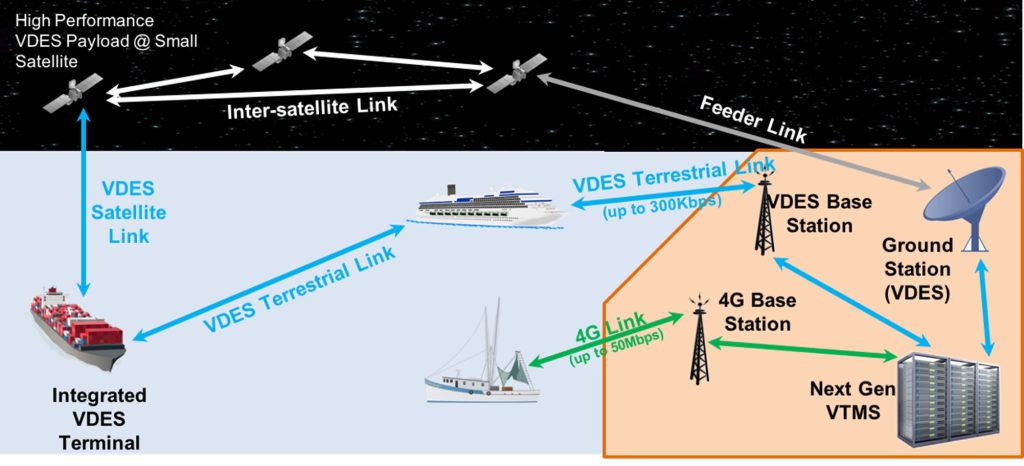
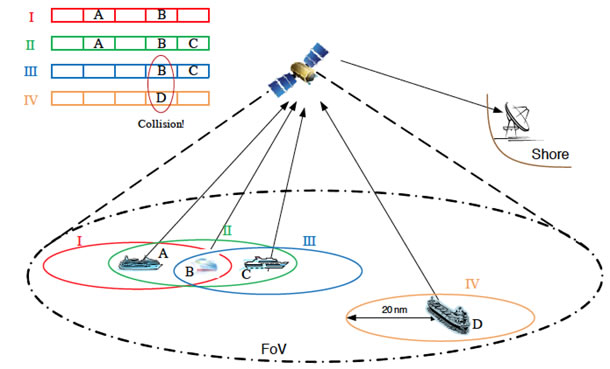
TECHNOLOGY FEATURES
- Metamaterial based Isoflux VHF antenna design to provide wide coverage (±60°), so as to reduce the number of satellites in a constellation for continuous monitoring.
- Novel de-collision technique using A*STAR’s patented unique signal analysis & protocol design to reduce signal interference & increase tracking capability in an anticipated dense environment and low-complexity radio resource management.
- Indigenous 12U small satellite design using NUS’s patented modular and scalable bus system with in-orbit firmware update and fault tolerant features. Assembly, Integration and Testing (AIT) of the small satellite with VDES payload will be performed at NUS STAR’s facility.
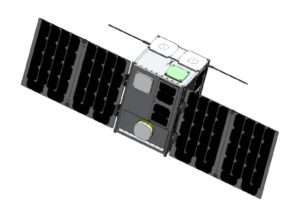
NEW APPLICATIONS
- MPA plans to deploy the VDES solutions which could complement and replace current Automatic Identification System (AIS) progressively over the next decade, to pilot real-time maritime traffic and assets tracking.
- Unlock new applications such as e-Navigation, improving safety & security at sea and enhancing operational efficiency of shipping and port, and augmented navigation.
- Local industries can develop the total VDES solutions for Singapore and extend to Global market.
GaN based Power Converter and Hybrid Energy Storage using Super-Capacity
The objective of this project is to investigate and develop a highly efficient and lightweight power supply system that will undergo space qualification testing. The power system developed for demonstration should achieve high peak power for payload operations of short duration as well as good continuous operating power with scalability features. The work also includes system-level studies (theoretical and simulation) for its extended use for peak power payload of up to the kW range in both space and industrial applications.
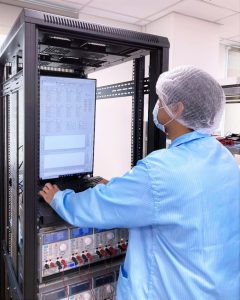
One key challenge for #Smallsats such as LUMELITE-1 to LUMELITE-5 is the power required by the payload. Power harnessing is constrained by the limited surface area of the solar panels. While using multiple deployable panels increase the power generated, an improved power converter can more efficiently use the same amount of energy to increase power to the payload. This desirably scales up power while maintaining satellite weight and volume.
Galassia-2: A Student Developed CubeSat for Remote Sensing
Galassia-2 is a 3U nanosatellite which will be orbiting at low earth orbit. The project is developed by a team of multidisciplinary FYP students and 4 research staffs, and is supported by the Engineering Design & Innovation Centre (EDIC).
Mission
The primary mission of Galassia-2 is remote sensing such as agriculture and environmental change. To achieve this, the satellite will perform target pointing for image capturing and data transmission, and sun-pointing to optimize the power generation. The satellite carries a multi-spectral camera payload which has Green, Red, Red Edge and Near Infrared bands. The images in Red and Near Infrared bands can be used to compute Normalized Difference Vegetation Index (NDVI).
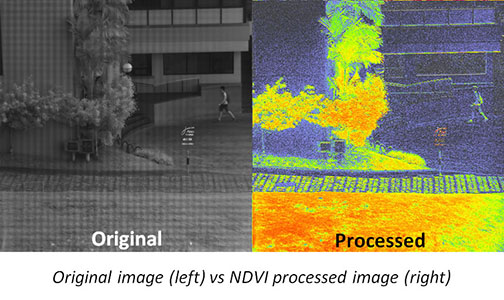
Satellite Configuration
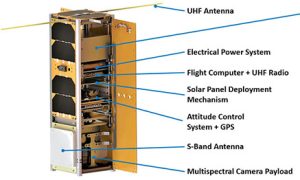
Payload Computer + S-Band Radio (PKL)
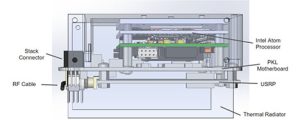
News & Events:
CDE & ECE Open House 2022 @ STAR
14 May, 12 Mar, 5 Mar 2022 Events
STAR hosted a total of more than 50 young students over the events, which is encouraging after hiatus of two years due to the pandemic restrictions.
On the left picture (STAR Mission Control Centre room), we have our Center Director Prof Low vividly explaining the details of daily Satellite Operation (Mission Control) once satellites are launched. The students were also treated to a view of our cleanroom, where Assembly, Integration & Testing (AIT) of ongoing satellite projects are carried out.
Lots of questions were asked during the events, we hope that this has piqued their interest in the Singapore space industry and look forward to seeing them as NUS undergraduates soon! Link to related ECE & iDP
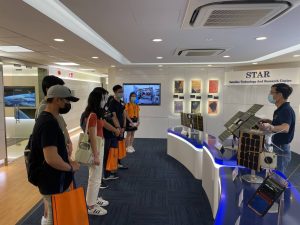
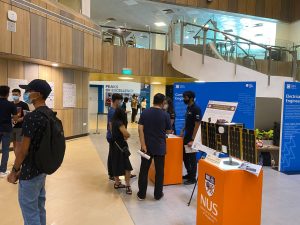
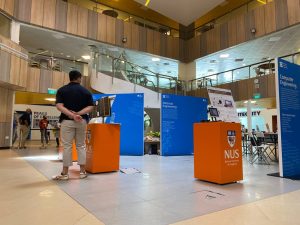
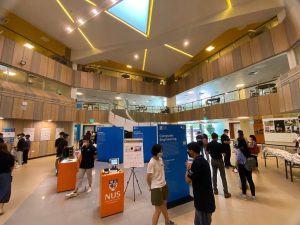
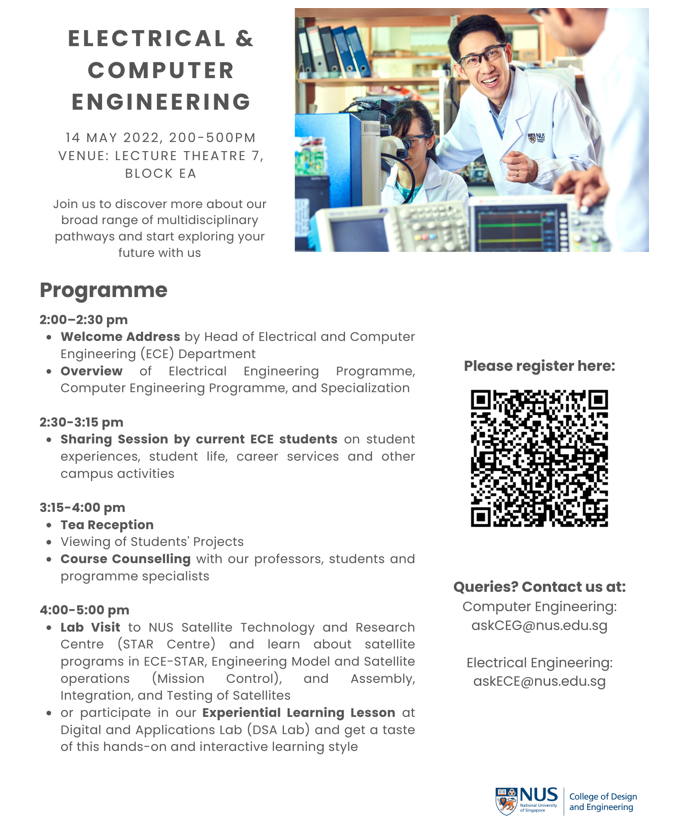
Small Satellites, Big Future
05 March 2019
Small satellites like these can be launched in coordinated fleets, working together to reveal new applications in the digital age. Click picture to link to original article.
Modern life relies on satellites. Everything from using credit cards and tracking flights, to weather apps and video calls, are only made possible by the complex network of man-made spacecraft orbiting our planet. What’s more, as terrestrial technology gets more intricate and connected via the Internet of Things, satellites will become even more essential in the future.
Today, there are nearly 5,000 satellites in space, and according to the United Nations Register of Objects Launched into Outer Space, this figure is snowballing annually. However, while the number of orbiting satellites continues to grow, their relative size and weight has been shrinking in recent years. In fact, if we were to define a small satellite as weighing less than 100kg, then more small satellites were launched in the previous two years than in all of human history.
To explain this rapid reduction in size of modern satellites, Professor Low Kay Soon from the Satellite Technology and Research Centre (STAR) at NUS Engineering gives his insights on their utility in the digital age.
Used mainly for weather monitoring and surveillance applications, satellites were traditionally about the dimensions of a public bus and weighed several tonnes. “Satellites like these cost hundreds of millions of dollars and take many years to build,” explained Prof Low. As such they could only be constructed by governments or very large aerospace organisations.
Now, smaller satellites have democratised the industry as they no longer require vast resources to build and launch. Definitions vary, but a satellite in the range of 10 to 100kg is usually classified as a microsatellite, while anything less than 10kg can be called a nanosatellite.
“Micro and nanosatellites can be built in a much quicker time frame for a fraction of the cost. Universities and commercial companies can now afford to experiment with satellite technology, and exciting new applications can be explored,” Prof Low explained.
“For a large satellite that costs a few hundred million dollars, you cannot afford to take risks and would have to be extremely conservative in choosing any new parts. Whereas with smaller satellites we can be more daring. We can use cutting-edge components and state-of-the-art instruments to conduct really interesting experiments.”
“Another advantage of smaller satellites is mass production using commercially available parts, such that dozens of satellites can be built and launched in fleets,” said Prof Low. Networking them together opens up the possibilities of new applications and greater resilience — if one satellite malfunctions, the rest of the fleet are still operational.
“These micro and nanosatellites can be built in a much quicker time frame for a fraction of the cost. Universities and commercial companies can now afford to experiment with satellite technology, and new exciting applications can be explored.”
Singapore is an up-and-coming player in the small satellite world with NUS research at the forefront. Previous NUS projects included exploring quantum technologies in space to develop quantum communications, and launching graphene into the stratosphere to test its properties for future applications.
Prof Low’s current research is looking at coordinating multiple satellites into flying formations. This is certainly no mean feat — formation flying requires pinpoint-accurate propulsion systems, atomic clocks that stay synchronised at 26,000km per hour, and the ability to locate the satellites in real time down to less than a metre.
“This has only ever been achieved with pairs of satellites previously. At STAR we are now working on formation flying with three satellites, and we are optimistic to be the first in the world to pioneer this ability,” he stated.
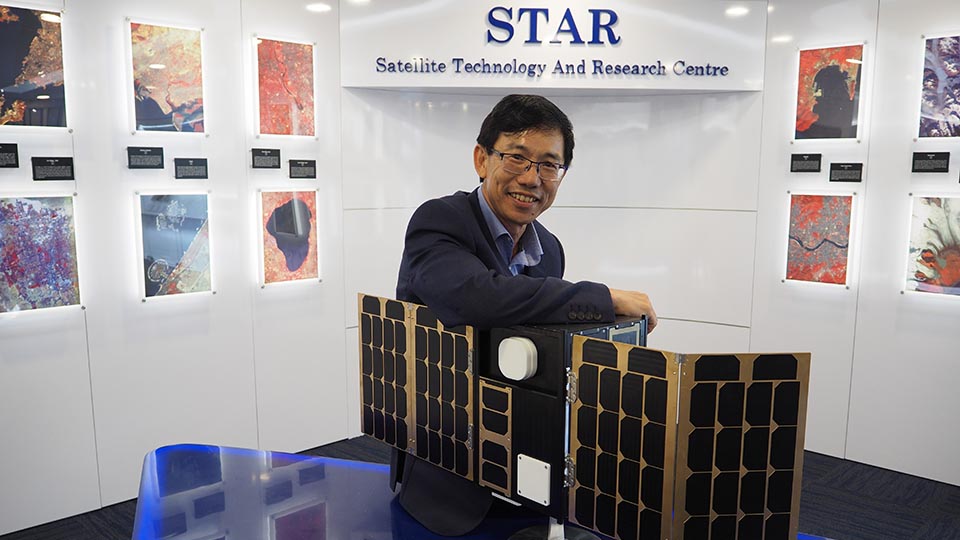
Prof Low’s ground-breaking work is thrusting Singaporean small satellites to new global heights
Small satellites have proven their utility and revealed new applications not even possible with large satellites. By using small satellites, the Internet will be made accessible to the world’s most remote places, a crucial connectivity need in this digital age.
Having launched six Singapore-made satellites in his career, Prof Low is upbeat about the local efforts, “With Singapore’s established track record in successful small satellite launches and the trailblazing research lab at STAR, we are certainly among the world leaders in this small satellite field. In the future, as this trend towards miniaturised satellites increases, this will definitely play to our strengths.”
IAS/PELS Singapore held workshop at STAR on wide bandgap semiconductor and application
12 November 2018
IAS/PELS Singapore held workshop at STAR on wide bandgap semiconductor and application
IEEE Industrial Application Society/Power Electronics Society (IAS/PELS) Singapore Chapter held a technical talk at the Satellite Technology And Research Centre on wide bandgap semiconductor and application. This event was organized in collaboration with Institute of Engineers Singapore (IES) Semiconductor & IC Design Sub-Committee (SICD SC) of the Electronics and Computer Engineering Technical Committee (ECETC).
There were a total of 4 presenters to share on the different topics related to wide bandgap power devices. Assistant Professor Xin Zhang from the School of Electrical and Electronic Engineering, Nanyang Technological University first gave a presentation on current imbalance in Silicon Carbide (SiC) MOSFETs connected in parallel and approaches to mitigate the problem. This is followed by Mr. Ban How Sin from Panasonic Semiconductor Solutions who share on semiconductor technologies to ensure reliability of the Gate Injection Transistor GaN. Finally, Professor Kay Soon Low and Dr. Bingyin Kang from the Satellite Technology And Research Centre (STAR) presented on application of GaN power transistors in power supplies for satellites.
The workshop lasted for four hours, which includes a Question and Answer (Q&A) session as well as a lab tour of STAR.
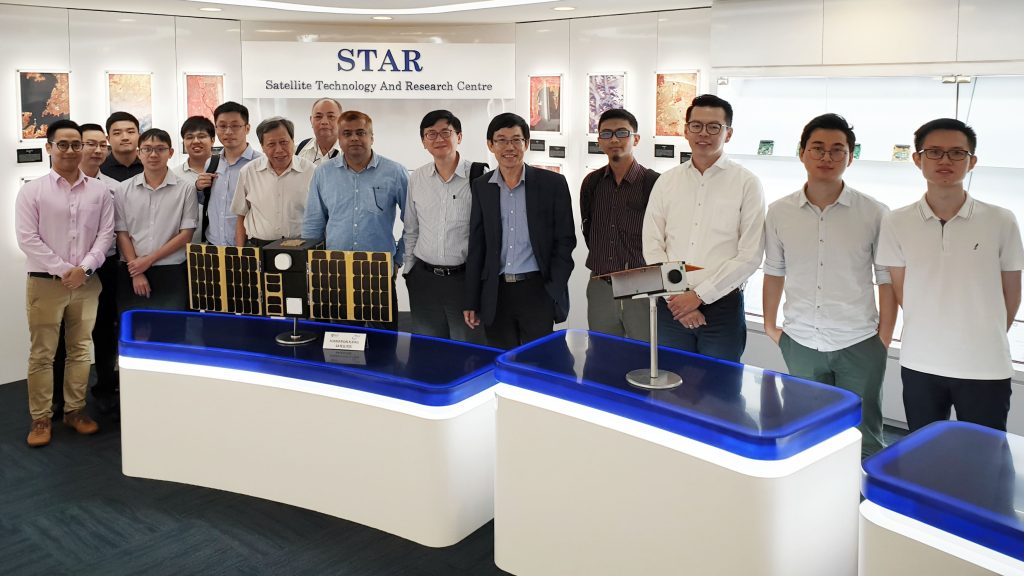
World of Science @ STAR
4 Jun 2018
STAR helps DSO to host a visit from World of Science participants. Over 20 secondary school students graced our centre to find out more about satellite developments, tests and applications. The hour long tour of STAR included an introduction to satellites, demonstration of satellite engineering modules: power and attitude determination & control, sharing of undergraduate student projects such as the successfully launch Galassia 3U satellite and sounding rocket programme.
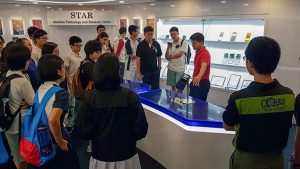
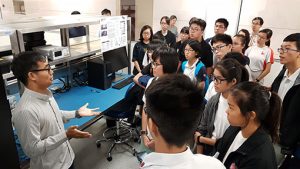
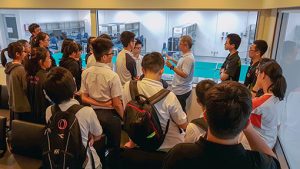
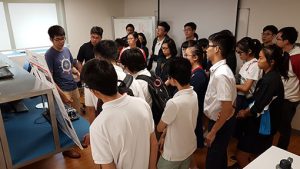
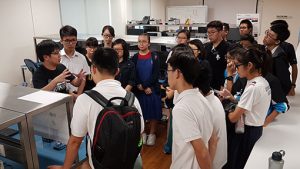
FoE Open House @ STAR
19 May 2018
This year STAR helps the ECE to host the open house for the incoming 2018 engineering undergraduate students. Braving the rain, over 150 young people and parents graced our centre to find out more about Engineering, the department of ECE and in particular satellite engineering opportunities that are available. The hour long tour of STAR included an introduction to satellites, demonstration of typical satellite mission control centre & operations, satellite engineering modules:power and attitude determination & control, sharing of student projects such as the successfully launch Galassia 3U satellite and sounding rocket programme. Staff and Undergraduate students from STAR provided a warm welcome and helped to answer many questions from our guests as they toured our facilities. At the end of the tour, our guests chatted with the staff & project students while having a tea reception.
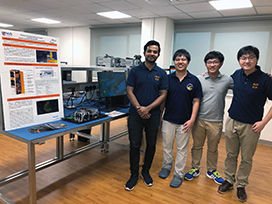
Galassia Team
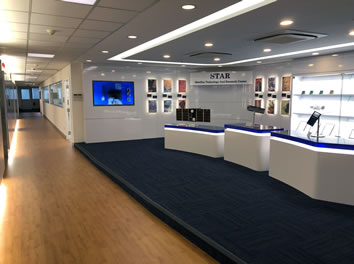
STAR display area

Mission control centre

Satellite models Q&A
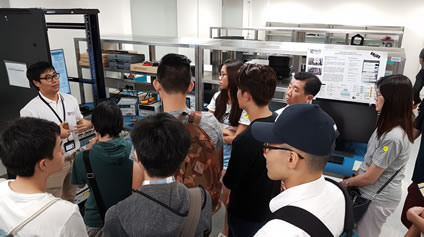
Electrical Power System presentation

Rocket project presentation
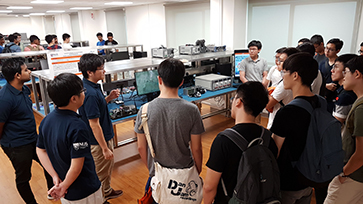
Galassia project presentation
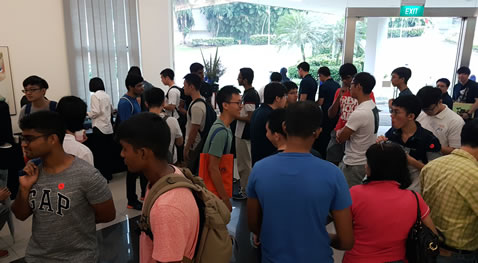
Student staff interaction
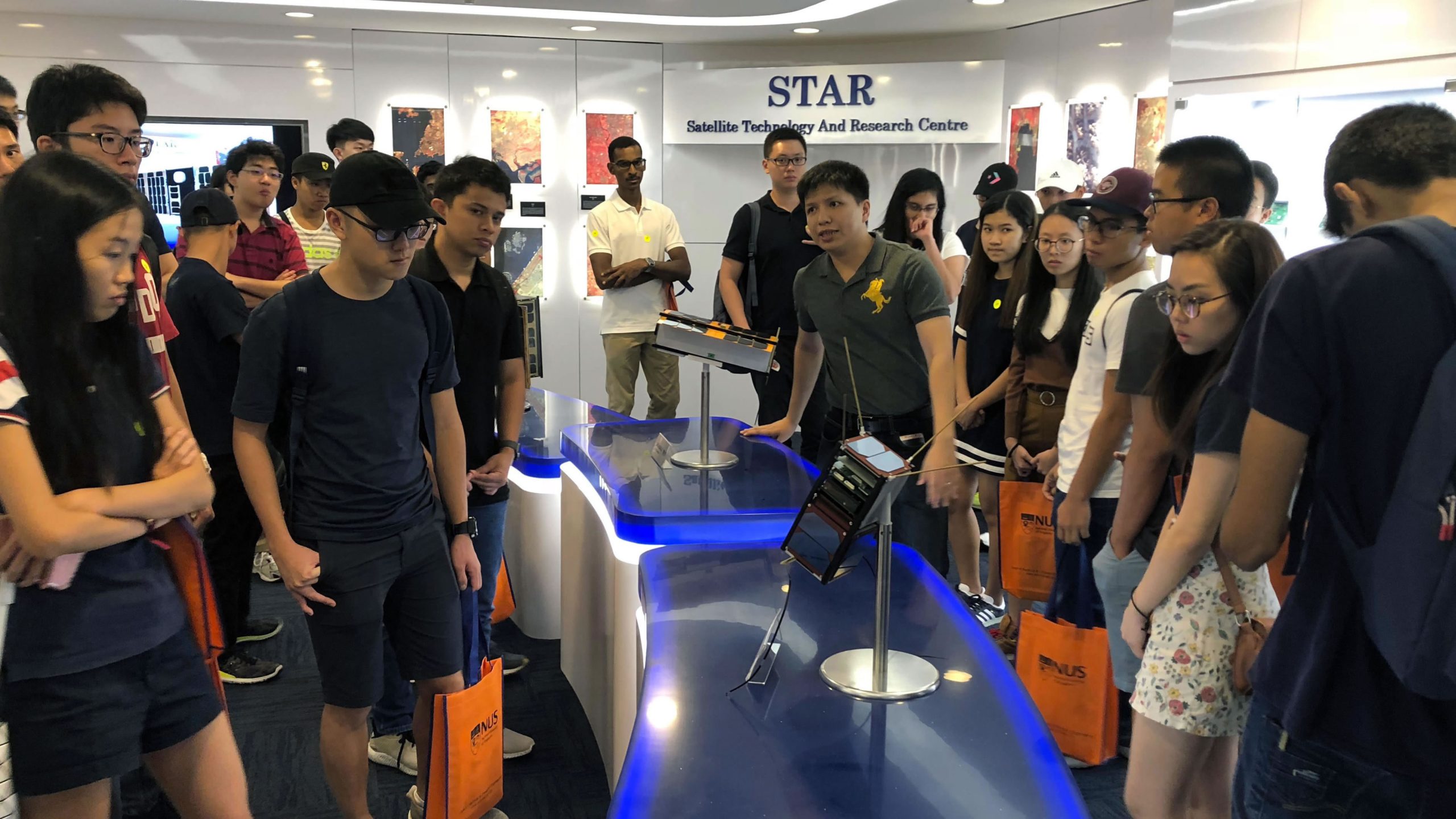
Welcome to STAR!
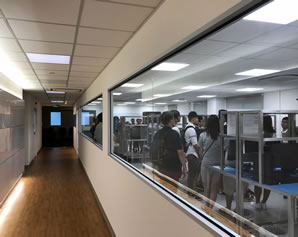
STAR ESD Lab
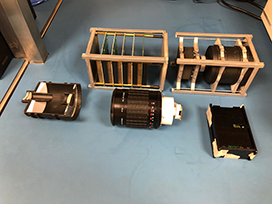
Galassia 3U model
Singapore may get small satellites to do the work of big onesNuper quisque evolvit praebebat turba hunc viseret foret vultus.
NUS and DSO set up satellite research centre to promote space technology education, research and commercialisation
NUS and DSO National Laboratories launch research centre to develop capabilities in distributed satellite systems
NUS and DSO set up satellite research centre to promote space technology education, research and commercialisation
How Satellites Could Make Singapore a Spacetech Leader
20 Oct 2017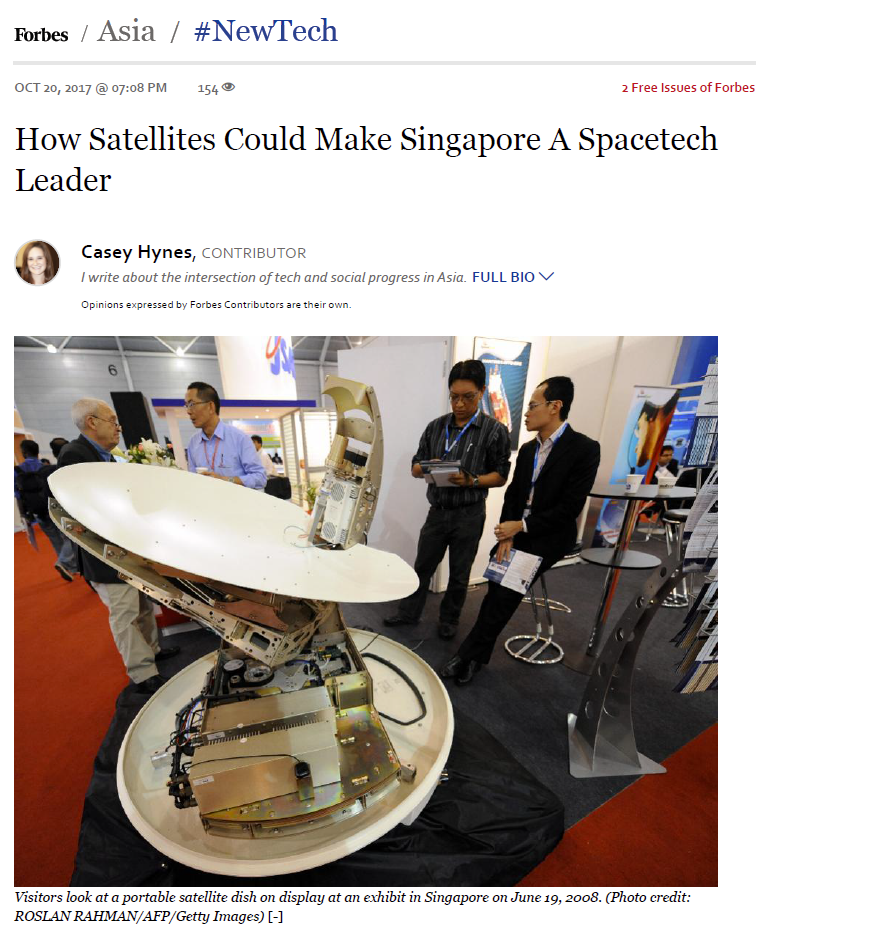
Spacetech enthusiasts and entrepreneurs in Southeast Asia are positioning Singapore as a potential hub for spacetech exploration, and satellite development could prove a cornerstone of these efforts. Prof. Kay Soon Low, Founding Director of the Satellite Technology and Research Centre (STAR) at the National University Singapore, said domestic and foreign interest in satellites has ramped up in recent years, bolstering Singapore’s status as a hotspot for spacetech innovation.
“In recent years, several foreign satellite companies have set up bases in Singapore, and we have also seen a number of new satellite startup companies,” Low said. At the recent Singapore Space Symposium he organized, more than 350 people expressed interest in the growing industry. “While many of them may not be directly involved in spacetech, they are from engineering industries that may be potential players in producing components or subsystems for satellites in [the] future,” he said via email.
Singapore launched X-SAT, its first “indigenous satellite” in 2011, according to Low, who worked on the satellite team. He said the experience was “very challenging” for the team, which was largely comprised of engineers who were unfamiliar with the satellite development process. However, X-SAT’s successful launch spurred the creation of the ST Electronics joint venture company and the subsequent launch of a commercial satellite called TeLEOS-1 in 2015. Low noted that in addition to these, NUS and Nanyang Technological University developed satellites as well, and that there are currently 11 Singaporean satellites in orbit.
In addition to being STAR’s Founding Director, Low also helped establish the programme. STAR conducts research in mission design, subsystem and component development, as well as training students to “to support the manpower needs of Singapore’s quest to build a new spacecraft industry.”
“The vision of STAR is to be a world-class center for advanced distributed satellite systems using multiple small satellites flying in formation, constellation or swarm,” Low said. “The mission of STAR is to support the advancement of Singapore’s space industry by providing state-of–the-art satellite technology.”
Dr. Bidushi Bhattacharya, a rocket scientist and founder of Bhattacharya Space Enterprises, told me earlier this year that she sees great potential in Singapore’s talent pool, although the pipline directly to spacetech is still rather short. However, engineering and other STEM fields are rich with talented individuals who could make natural transitions into spacetech, she said.
STAR and other university programmes will play an important role in filling that pipeline, according to Low, who directed the Satellite Research Centre (SaRC) at Nanyang Technical University before founding the STAR programme at NUS. “We hope to develop an ecosystem comprising a critical mass of talents as well as technical expertise to pioneer experimental satellite platforms, as well as to address scientific and engineering challenges of future innovative satellite programmes and applications,” he said.
Like Bhattacharya, Low sees great potential for Singapore’s spacetech scene to grow, thanks in large part to NUS’ and NTU’s engineering programmes, both of which offer opportunities to hone space-specific skillsets. “With more satellite companies setting up in Singapore, more students are likely to be attracted to join our satellite programme,” Low said.
Low noted that commercial interest in small satellites has been on the rise during the past several years, in Singapore and more broadly. He pointed to the Indian Space Research Organization’s launch of 104 satellites this year, most which weighed less than 10 kilograms, as evidence of this uptick. Growth in satellite development not only bodes well for Singapore’s economy, it also creates opportunities for nurturing young talent.
“Involvement in the satellite programme provides students with good multidisciplinary team-based experience for real life project applications,” Low said.
He expressed optimism about market openings for Singaporean companies. “In this niche area, our companies could also avoiding direct competition with space veterans of large satellites. Investment for the infrastructure to produce and test small satellites is also relatively lower,” Low said. He also noted that Singaporean companies could offer niche specialisation in small satellite constellation or formation flying as well. The growing industry is creating fresh excitement for Low and his colleagues because “This gives us the opportunity to nurture the next generation of satellite engineers,” he said.
Commentary: How Singapore can be a space power, with small satellites
8 Oct 2017
The space race of the Cold war may be long over, but the time is now for Singapore to fight for a slice of the satellite industry pie, says National University of Singapore’s Low Kay Soon.
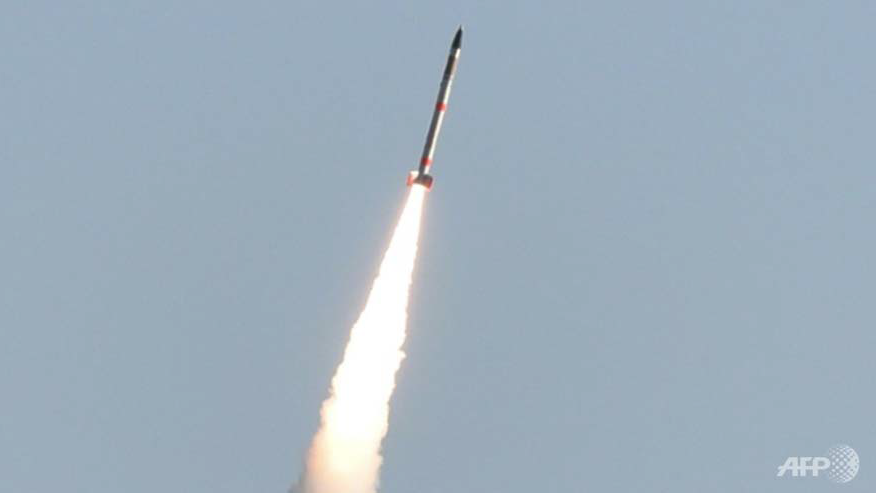
SINGAPORE: In 1957, the first man-made satellite was launched into space by the Soviet Union. Since mankind’s first foray into space, we have not looked back.
Today, there are more than 61000 satellites In apace.
In the earlier decades of satellite development, the key players were governments, especially those of large countries, whose use for satellites were primarily for weather monitoring, remote sensing of environmental conditions and surveillance.
In recent years, many commercial applications have emerged, such as the use of Global Positioning System (GPS) satellites for asset tracking, and the provision of satellite television programmes, telecommunication services and Internet sentences.
With Its many application, the annual market revenue for the satellite industry stands around US$260 billion
THE EVOLUTION OF THE INDUSTRY
Back in the early days, satellites weighed a few thousand kilogrammes and were huge, with a height of several storeys. Such satellites took years to build, and were typically very expensive.
The majority of them were owned by a monopoly of governments or large organisations.
over the last two decades, however, miniaturised satellites have been gaining popularity.
Such satellites typically weigh from a few to tens of kilogrammes, with a volume similar to that of a bar fridge.
While initially built by universities as technology demonstrators, the functionality of such small satellites following rapid advancements in technology has garnered interest from government space agencies and commercial companies.
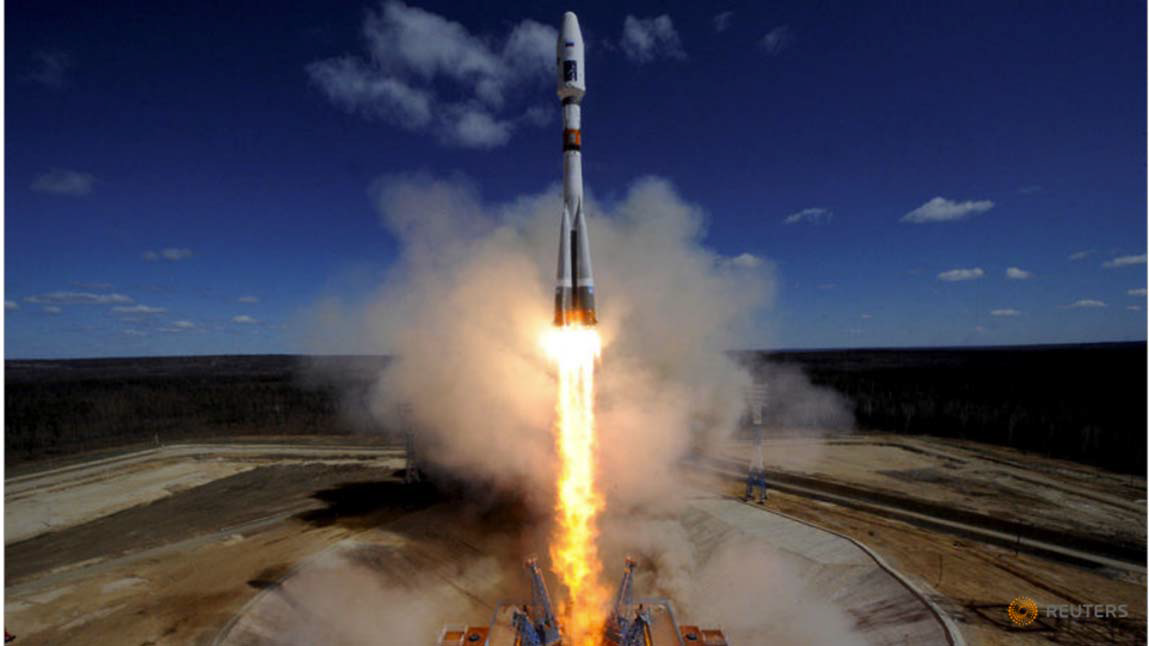
For example, the US National Aeronautics and Space Administration (NASA) is planning to launch two briefcase-sized miniaturised satellites of 10kg each to Mars next year. These two satellites will help NASA monitor the Insight mission when It first lands by relaying information about the landing to ground controllers back on earth.
THE ADVANTAGE OP BEING SMALL
The key advantage of miniaturised satellites, particularly those with a mass less than 20kg, is the low cost of building and launching them into space. Building time is also significantly cut as these can be mass produced.
Their lower cost and smaller mass mean such satellites can potentially be built and launched in fleets of tens or hundreds. Having such large numbers of small satellites in space enables up-to-date monitoring of the earth across wide areas, for uses such as earth imaging and the collection of weather data. For Instance, a typical low Earth orbit satellite flies at a height of 500km above sea level at a speed of 26,000 km/h These satellites go around the earth about 14 to 15 times a day, requiring only 100 minutes to make one complete orbit.
If there are 10 of them In space, the same spot can be monitored every 10 minutes.
Commercial Interest In miniaturised satellites bas been growing since 20131 partlcu1arly In those that weigh less than 5kg. In total, there are more than 500 miniaturised satellites in space, and just about half of them are from the space industry
ID February this year, the Indian Space Research Organisation (ISRO) launched a total of 104 satellites, with 103 of them weighing less than 10kg each. Among them, 96 belong to two commercial companies, an Indication of the private sector’s Increasing Interest and capability to enter the space market.
SINGAPORE’S SPACE JOURNEY
Singapore has space dreams too. Our first programme to develop a locally-built satellite was in 2003.
The satellite, named X-SAT (eXperimental SATellite), involved DSO National Laboratories, Nanyang Technological University and the National University of Singapore. It was completed in 2009, and launched on Apr 20, 2011.
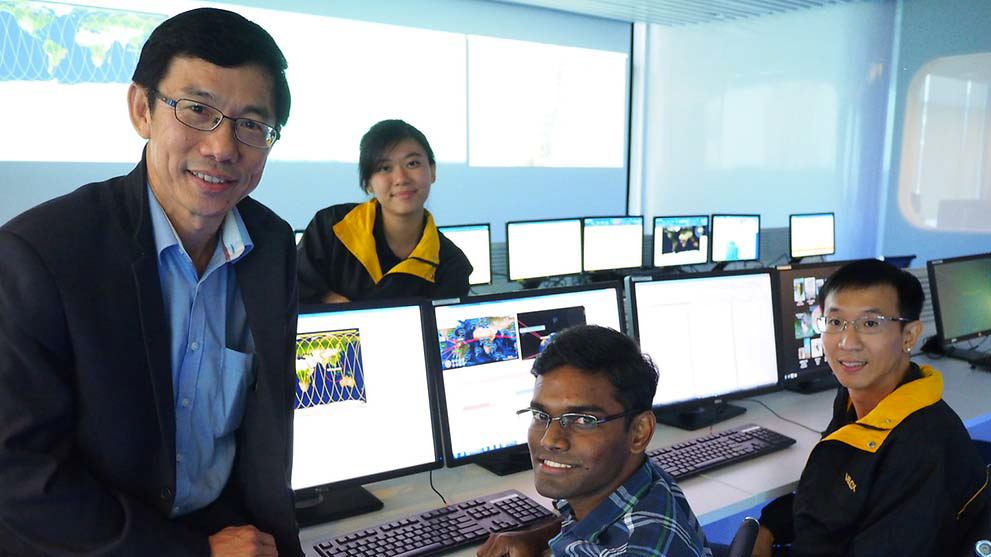
The X-SAT allows us to perform remote sensing to monitor environmental change and detect forest fires, among other things. The programme’s other important objective was to build local capabilities in satellite engineering.
Its success led to the formation of a new satellite company ST Electronics (Satellite Systems) In 2011, which subsequently built and launched Singapore’s first commercial satellite TeLEOS-1 in December 2015.
This satellite is capable of Imaging the earth with a resolution of 1m, meaning to say that it can tell objects that are 1m apart from space, and its average revisit time, the time between observations of the same spot on earth, is around 12 to 16 hours.
With these capabilities, the satellite can facilitate quick response to maritime situations and disaster monitoring.
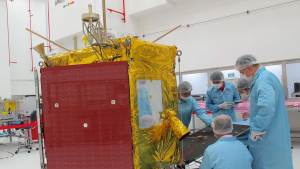
Singapore Space Symposium 2017 @ NUS
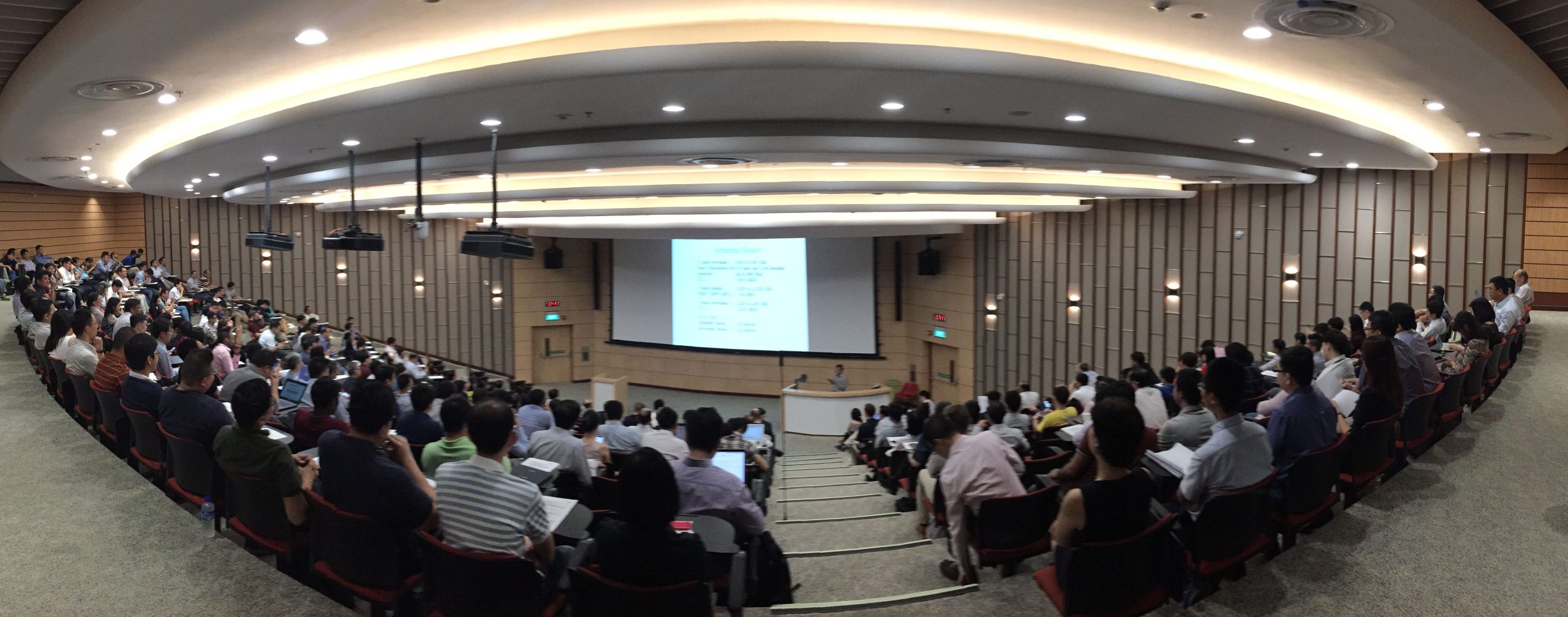
ECE Department and EDB jointly organized the fourth edition of the Singapore Space Symposium on 27 September 2017. The symposium was well attended by an overwhelming attendance of more than 350 people, mainly from the industry.
Professor Chua Kee Chiang, Dean of Engineering, gave the opening address. This was followed by the keynote speech by Mr. Beh Kian Teik, assistant managing director of EDB. This full-day symposium aims to promote research and development activities on satellites and foster collaboration on satellite technologies between public institutions & industries.
The symposium had a total of 15 presentations by companies such as ST Electronics, THALES Alenia Space, Airbus Defence & Space, DigitalGlobe etc. as well as by researchers from NUS, NTU and A*STAR. The symposium covers a wide ranging of topics. The chief engineer of ST Electronics, Mr. Koh Wee Eng, presented how they built up the satellite team and facilities leading to the completion of Singapore’s first commercial satellite named TeLEOS-1 in December 2015. Prof Low Kay Soon, Director of Satellite Technology And Research centre (STAR) from ECE Department presented the new trend in satellite technology in the industry which favours miniaturized satellites weighing 5-20kg flying in a fleet of a few tens to hundreds. Among others, there were presentations on a new laser based technique to perform radiation study, quantum technology for secured communication, and low-cost sounding rocket launch. There were also 13 poster presentations, exhibits from companies and a panel discussion on “Valley of Death”.
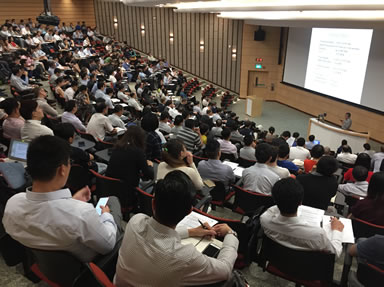
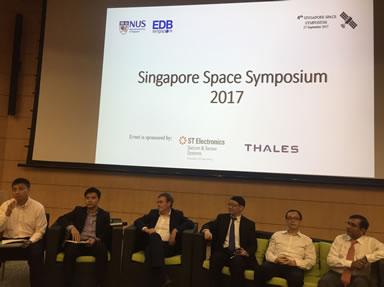
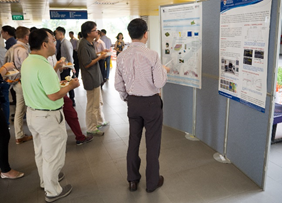
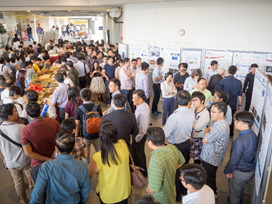
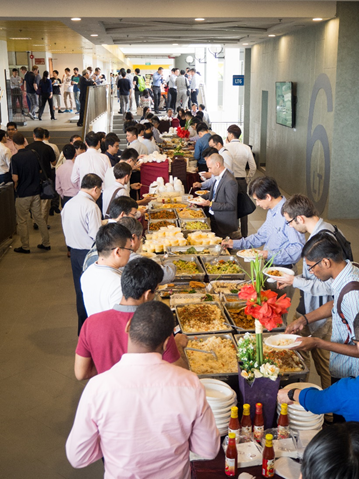
Learning at warp speed
2 Jul 2017
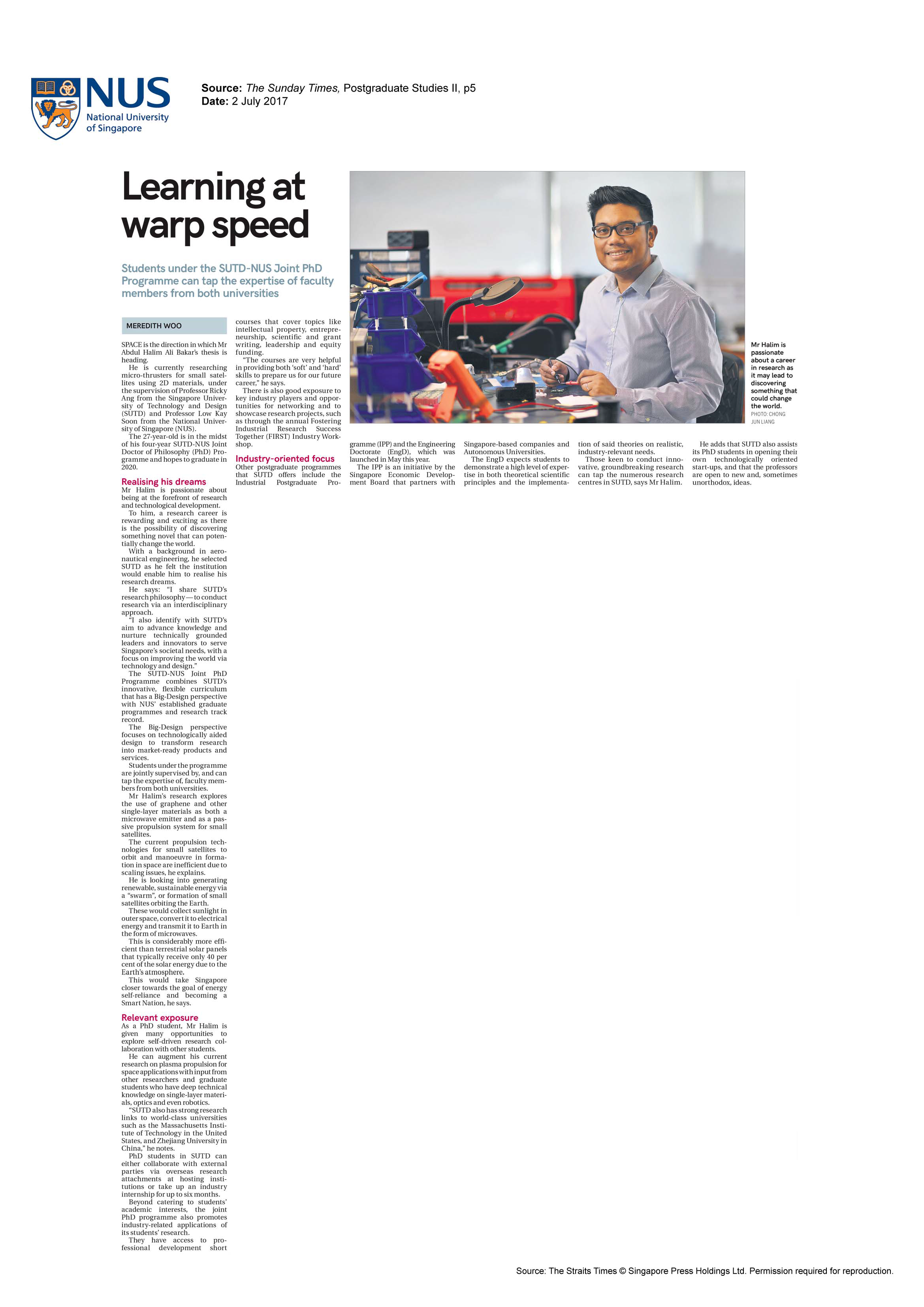
Professor Low Kay Soon speaks at EmTech Asia 2017 on Space 4.0: A New Era for Space Exploration
14-15 Feb 2017
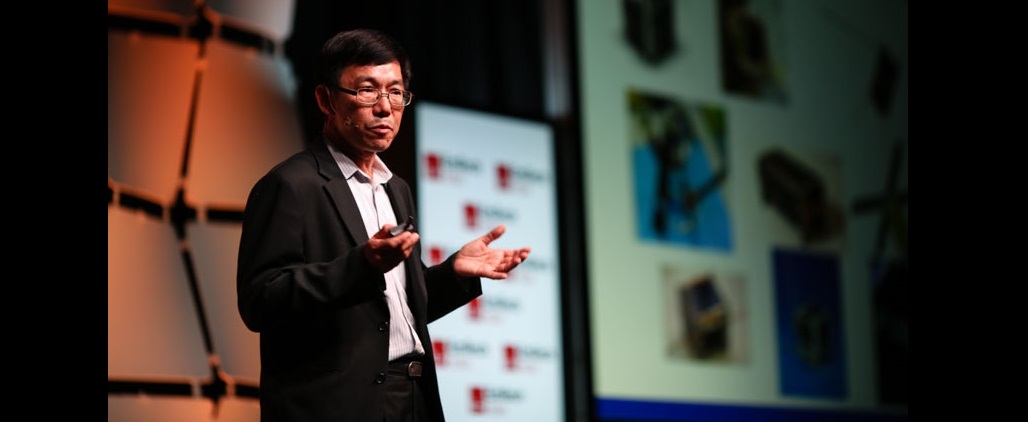
The Future is Big with Miniaturised Satellites
OpenGov speaks to Professor Low Kay Soon, Department of Electrical and Computer Engineering, National University of Singapore (NUS) about his pioneering work in launching Singapore-made satellites, the potential applications of miniaturised satellites and more.
By Dean Koh Link to original article in OpenGov website
To date, Professor Low (above photo) has helped develop and launch 7 Singapore-designed and built satellites successfully into space and orbit – no small feat considering Singapore’s tiny size and lack of access to space launch facilities. OpenGov spoke to Professor Low at EmTech Asia 2017 to hear more about his new role at NUS, the trend towards miniature satellites and his thoughts on the burgeoning satellite industry in Singapore.
Could you share with us about some of the projects you are working on right now?
I was previously the Centre Director for the Satellite Research Centre of Nanyang Technological University (NTU). I have just moved to NUS and will be starting a new research centre at NUS on satellite technologies. The trend of satellites is moving towards miniaturisation and this is something we hope to go into.
You mentioned about the miniaturisation of satellites as a trend in the industry. Could you tell us about the advantages of making and launching miniature satellites?
With miniature satellites, the manufacturing and launch costs are lower compared to having one big satellite. Additionally, you can launch many miniature satellites. By launching a constellation of small satellites, you can actually cover the whole Earth and reduce the latency time. It is also possible to provide new services that were not possible in the past. Traditionally, the satellite industry always builds one big satellite which is 1000kg or a few tonnes in weight, each time, companies can only afford to build one.
Now, we can launch up to 50 or a 100 small satellites so they cover the whole Earth and each of them can pick up signals here and there. In the past, satellites are mainly deployed to perform remote sensing and take pictures.
Moving forward, satellites can do more than just take pictures – you can use them to track ships to enhance maritime security; all the ships generate some kind of radio signal to identify themselves. The signals from these ships are normally monitored land-based, for example the Port of Singapore Authority (PSA) will pick up these signals and identify the various ships. But once a ship travels to the middle of a vast ocean, it is almost impossible to pick up the signal. So if you have satellites to pick up these signals, ship owners and insurance companies can know where the ships are and monitor their movements in real-time.
Another area that researchers have started looking at but not yet implemented related technologies is the tracking of aircraft. Aircrafts also carry a type of signal called ADS-B to identify their location, so it is possible for satellites to pick up this signal and track the aircraft. These are some examples of location tracking services that satellites can deliver.
Beyond these services, some of the more unique applications will be in the areas of Internet of Things (IoT) and Machine to Machine (M2M) communication. In the area of IoT, I have not really seen companies demonstrate the use with satellites yet but this may happen about 2 years later. What this means is that IoT devices can connect directly to the satellites and be monitored instantly even though they may be in a remote location.
There are some niche areas of applications involving IoT and M2M. For instance, IoT and M2M applications can be used to monitor mining activities that are conducted outside the city areas or in deserted areas.
You were pivotal in helping Singapore design and launch satellites into space. What were some of the challenges faced in doing pioneering satellite work in a nation not necessarily known for satellite-related development and research?
There was a lot of knowledge that we didn’t have in the beginning, as we were not trained in space-related work. We were all from electrical engineering and mechanical engineering so the challenge was in gathering a group of people to work and learn together. I think the main challenge is getting people who are willing to work together for a long period of 5 years or more. After building the satellite, we can’t be sure that it will be successfully launched, there are no guaranteed results.
So we really have to put in a lot of effort to gather the right people who will work together with a shared vision. I am heartened that in the teams that I had worked with so far, everyone puts forward his or her best effort to ensure the success of the projects. So far I have launched 7 satellites into orbit and all are successful. This doesn’t happen by chance, but it is because we had put in a lot of effort in testing the various components. The credit goes to the whole team, as no one person can do all these tasks.
For the satellites, how long do you intend for them to orbit in space?
Satellites are typically designed for a 3-year operational lifespan. Sometimes a satellite may go beyond that, for instance, the X-Sat (launched in 2011) – it is still doing well. The team still conducts regular telemetry to the satellite but we have scaled down its operations. When the satellite is newly launched, we worked intensely to conduct all the experiments because we have certain project deliverables. We make sure that all the experiments were conducted and gathered all the data needed, so that the information can be used for the next project.
You mentioned in a Channel News Asia report that Singapore has highly competent manpower to sustain a local satellite industry. What are your thoughts on the current development of the local satellite industry and what areas do you think the next phase of development should focus on?
In NUS, we have space related course modules and projects for engineering students. Through all these programmes, we train skilled manpower for the satellite industry, and this is an important component of the ecosystem that we are trying to build up. Besides ST Electronics (Satellite systems) Pte Ltd, we have seen a couple of small new companies coming to Singapore such as Spire, Astroscale and a few others. I think it’s evolving. Building a space programme is no easy task, it takes years to grow and nurture the programme.
You look at 10 years ago when the Singapore Economic Development Board (EDB) started to grow the aerospace industry, it took some years for the big companies to invest in Singapore. Space ventures are even more difficult – do we really have the engineers who can build the satellites when the big companies come over? How do we overcome these obstacles?
By demonstrating to the world that universities in Singapore are capable of building satellites, companies will take notice and be convinced that we do have a supply of engineers who have the skills to build satellites, if they are keen to come to Singapore.
Are there any specific programmes in NUS that offer satellite-related research and training?
NUS Engineering offers a Design-Centric Programme in which students can take space-related modules in their first, second and third years. These modules are designed to impart some basic knowledge on satellites. Students who are in the second, third and fourth year of study can also participate in satellite-related projects in the Department of Electrical and Computer Engineering.
Career Opportunities:
- Software Systems (Engineer/Senior Engineer)
- Electronics Systems (Engineer/Senior Engineer)
- NUS-DSO Graduate Programme
- Undergraduate Research Opportunities Programme (UROP)
Contact Us:
Department of Electrical & Computer Engineering
Satellite Technology And Research Centre (STAR)
Singapore Wind Tunnel Facility Level 3
5 Sports Drive
Singapore 117292
Email: star@nus.edu.sg


